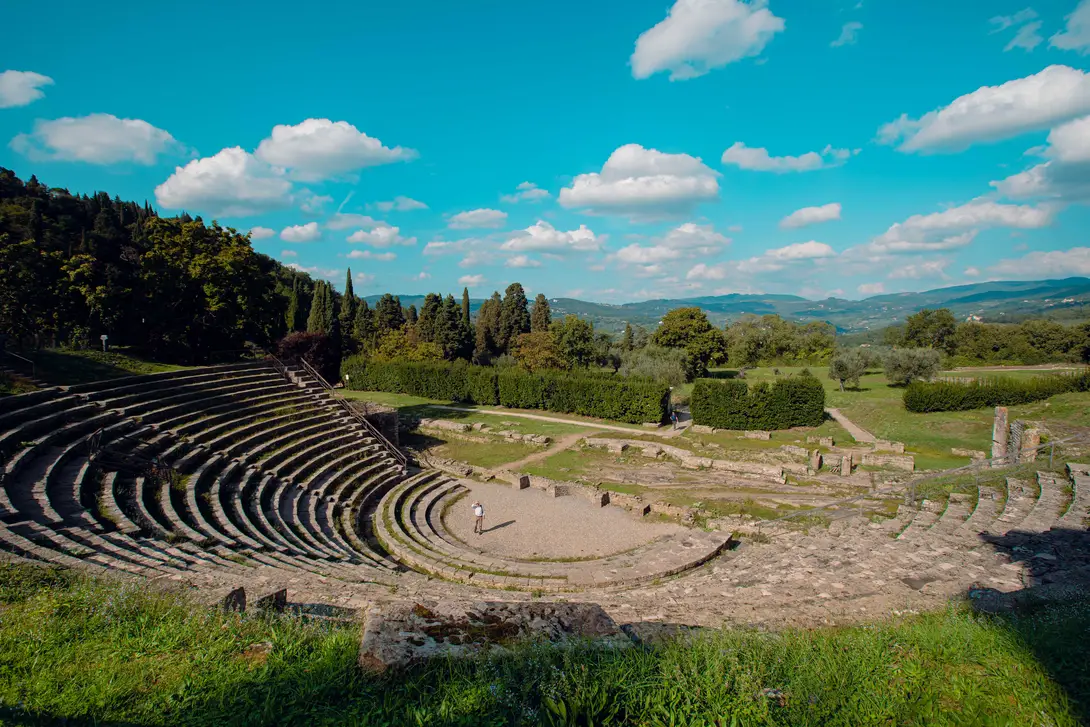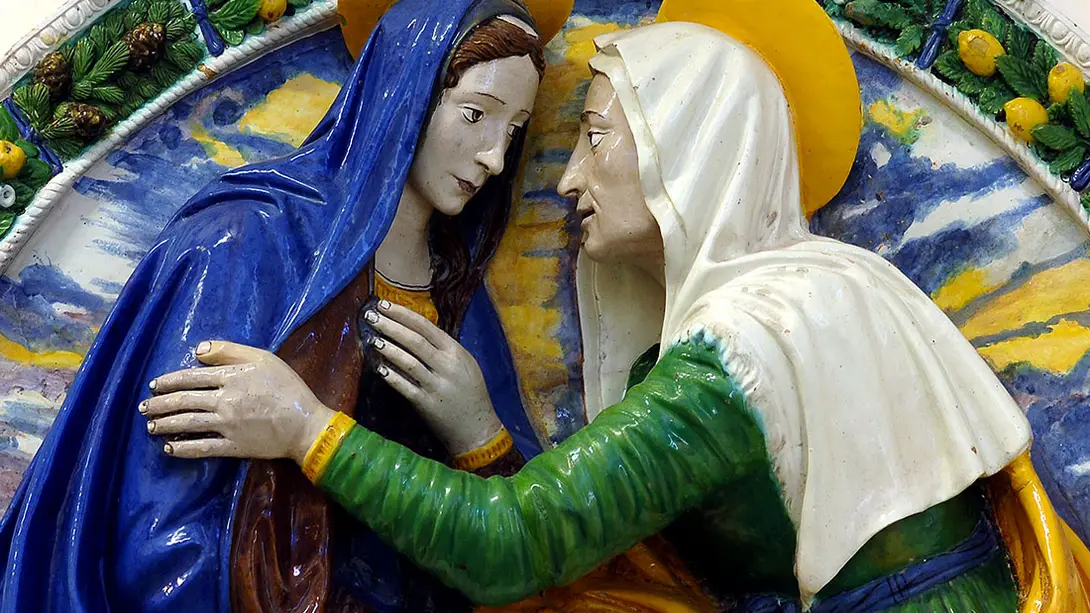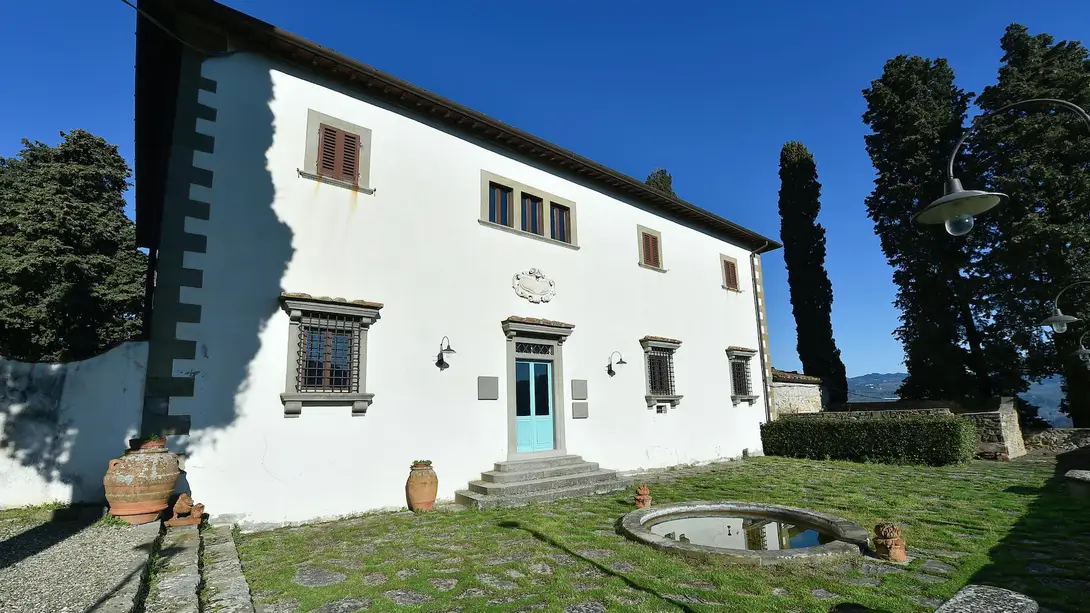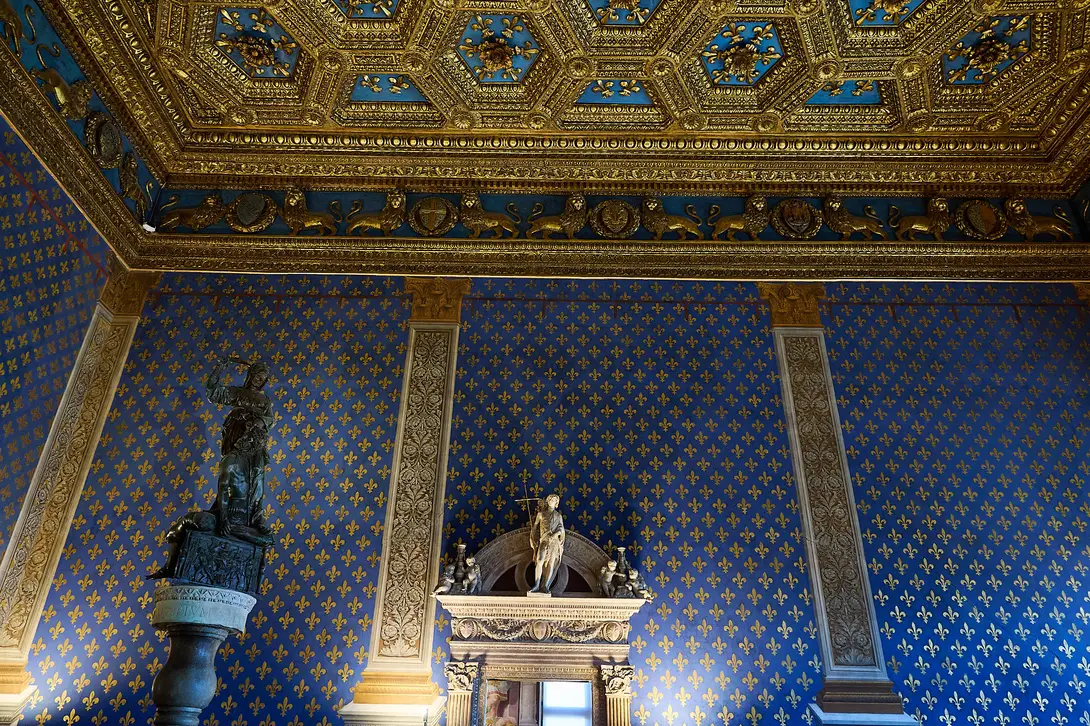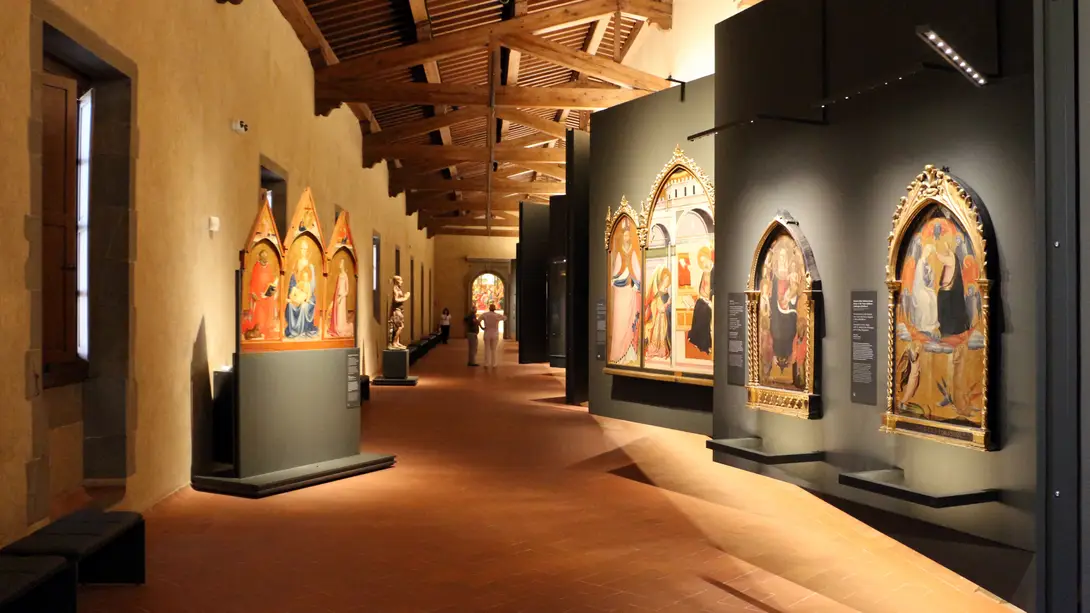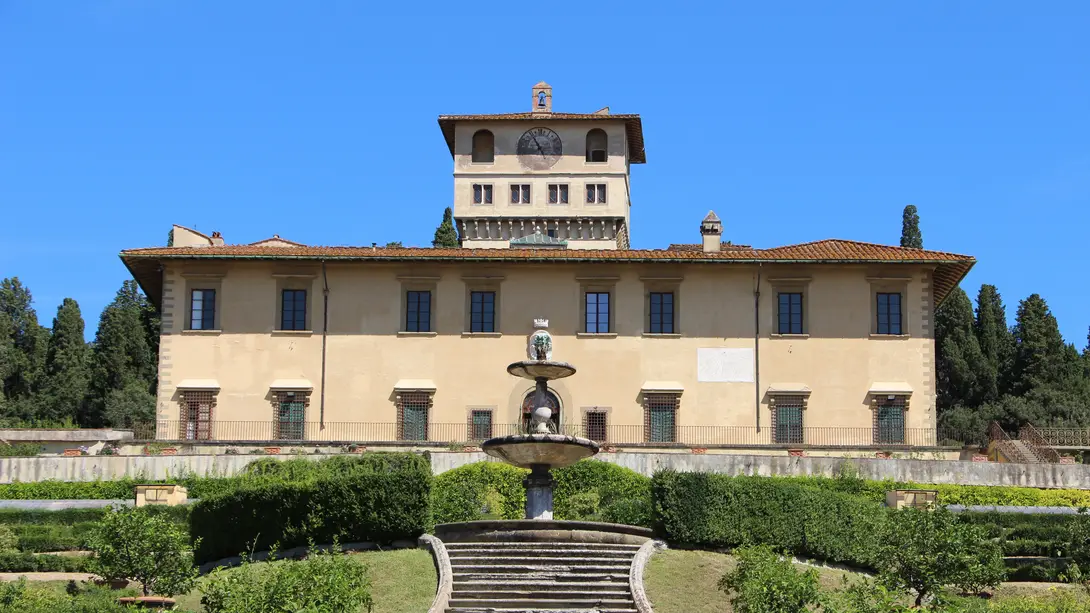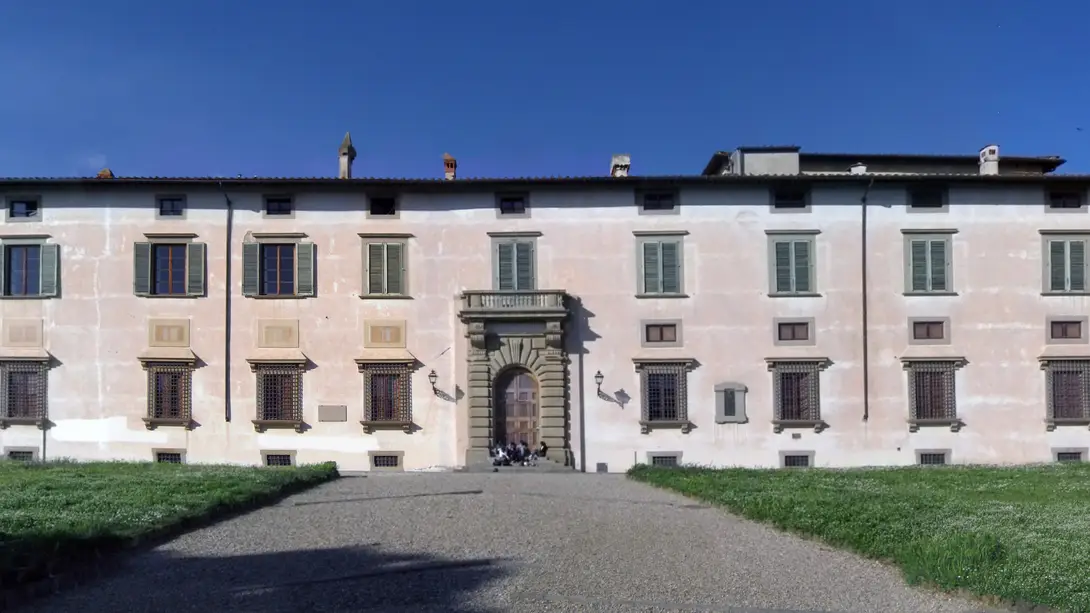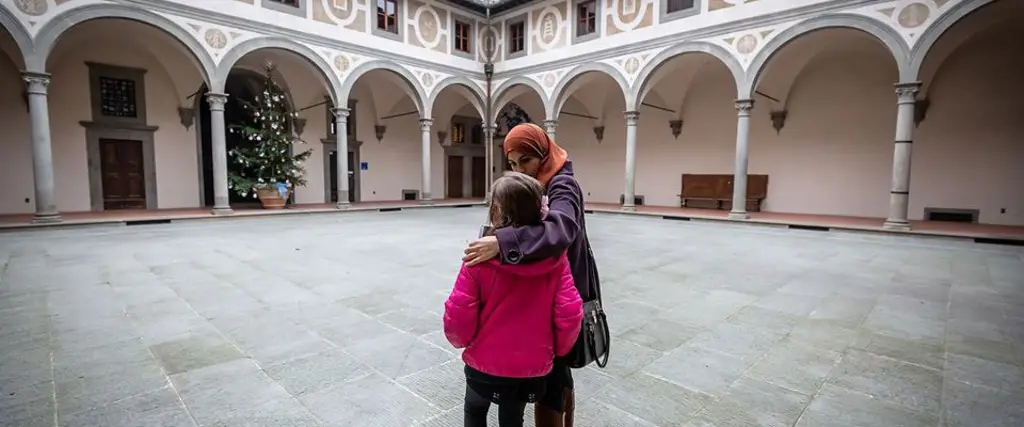
Florence art seen through the eyes of migrants
Break down prejudice, promote mutual knowledge, overcome cultural differences using the extraordinary instrument of beauty. All this is at the basis of AMIR, an innovative project of cultural integration through the knowledge of the history and art of Florence and Fiesole.
AMIR is an experimental project (the name in Arabic means 'young prince') started in September 2018 and still ongoing, by a network of museums in the area, aimed at proposing cultural mediation activities conducted by foreign citizens.
It currently involves 32 mediators and 8 museums, collections and monumental complexes in Florence and Fiesole, which are:
Museum and Archeological Area, Museo Bandini, Museo Primo Conti at Fiesole
Museo di Palazzo Vecchio, Museo Novecento, Museo degli Innocenti in Florence
The project is promoted by the Municipalities of Fiesole and Florence, by Mus.e, Istituto degli Innocenti, Fondazione Primo Conti and Stazione Utopia with the support of Fondazione CR Firenze.
Thank to the CR Foundation it is possible to visit the Art Collection of the Foundation; visits are held in Arabic
Go to the website
Amir
The places
Stages
Archaeological Museum and Archaeological area
The museum exhibits chart the ancient history of Fiesole and the surrounding area: human presence in the zone dates back at least as far as the Bronze Age (around 2000 BC), while the cityitself began to develop at the end of the 4th century BC. Fiesole was an important Etruscan settlement, occupying a strategic position controlling routes between southern Etruria and the Etruscan settlements in the Po area, and a bulwark against invasions from northern peoples, in particular the Gauls. It became a Roman colony in 80 BC, though it retained its Etruscan characteristics: in fact, the Romans chose to settle in the valley, founding Florence.
The museum is connected to the Archaeological Zone, comprising the excavations of a theatre, baths and an Etruscan-Roman temple. The museum also houses the Costantini Collection, consisting of ancient Greek vasesand a reconstructedLombard tomb. Also of note are various Etruscan bronzes, black- and red-figure Greek and Etruscan ceramics, and marble friezes from the Roman theatre.
Bandini Museum
The museum is named after Canon Angelo Maria Bandini (1726–1803), a scholar and art collector, and houses variousmedieval and Renaissance paintings, including work by Taddeo Gaddi, a Crucifixion by Lorenzo Monaco and four Triumphs (c.1480) inspired by Petrarch and executed by the School of Botticelli. There is also a collection of terracottas produced by the Della Robbia between the second half of the 15th and the first few decades of the 16th century.
Museo Fondazione Primo Conti
The 15th-century Villa Le Coste, for many years the home of the Florentine painter Primo Conti, is now occupied by the foundation that takes his name. It consists of an archive with over 100,000 documents, relating principally to Futurism and its leading exponents, and a museum. Here there are about 60 paintings and 150 drawings covering a period from 1911 to 1985. Through Conti’s work it is possible to observe the development of trends in 20th-century Italian and European art.
Palazzo Vecchio - Monumental Rooms
Palazzo Vecchio is the city's symbolic monument and, for over seven centuries, the seat of its government; it bears extraordinary testimony to all the salient phases of Florence's history and art. It overlooks, with its imposing bulk, Piazza della Signoria.
The Monumental Quarters form the heart of the museum itinerary and include a series of rooms, starting with the grand Salone dei Cinquecento (with a decoration that celebrates Florence, and in particular the Medici dynasty following the advent of Grand Duke Cosimo I), overlooked by the precious Studiolo di Francesco I.
A little further on is the Sala dei Duecento. On the upper floors one can admire: the Sala dei Gigli, the Sala dell'Udienza, as well as the so-called Quartieri Medicei (Eleonora di Toledo's Quarters and the Quartiere degli Elementi). Also of interest is the Sala del mappamondo (or the Sala del Guardaroba), with ancient geographical maps, and the Cancelleria, which was the office of Niccolò Machiavelli during the first Florentine Republic.
The decorations of the various rooms were made between the 15th and 16th centuries by important artists, including Ghirlandaio, Bronzino, Vasari and his assistans.
Along the museum itinerary are some masterpieces of Renaissance sculpture: Michelangelo's Genius of Victory (Salone dei Cinquecento), Donatello's bronze group of Judith and Holofernes in the Sala dei Gigli, Verrocchio's Puttino (the one in Michelozzo's courtyard, the main entrance to the Palazzo, is a copy).
Another museum tour of Palazzo Vecchio include the Arnolfo Tower, with breathtaking views from the top.
All children who come to Florence should be taken to Palazzo Vecchio. The Mus.e Association organises daily activities for families with children of different age groups, from 4 years upwards, by reservation only. For a fun visit on your own, it is possible to rent a Family Kit (recommended for children from 6 years of age) with a map and other useful items for a visit to the Palazzo or the historical centre under the banner of knowledge, wonder and sharing.
Museo Novecento
The Museo Novecento, on piazza Santa Maria Novella in the premises of the former Leopoldine schools, is dedicated to 20th-century Italian art, presenting a selection of works from the civic collections which focuses on Italian art of the first half of the 20th century. Of great value is the Alberto Della Ragione collection, donated to the city of Florence in the aftermath of the 1966 flood, with artworks by Giorgio De Chirico, Filippo De Pisis, Gino Severini, Giorgio Morandi, Mario Mafai, Renato Guttuso, Felice Casorati among others.
The museum is completed with the exhibition of the legacy of Ottone Rosai, donated by his widow Francesca Fei and his brother Oreste to the Municipality of Florence.
The museum hosts many temporary exhibitions dedicated to contemporary artists in its ground floor rooms.
For the exhibition by American artist Haley Mellin, the courtyard was planted with around 300 native plants, based on research into the original layout and uses of the garden.
In addition to the permanent collection, the temporary exhibitions and the programme of the Cinema and Conferences Room enrich the activity of the museum with a thematic and multidisciplinary approach. Through its art mediation department the Museum daily arranges educational activities like workshops, guided tours for families, children, teenagers, adults and special audiences.
Museo degli Innocenti
This museum collects the historical and artistic heritage of the ancient Spedale degli Innocenti, a building designed at the beginning of the 15th century byFilippo Brunelleschi, in order to welcome the abandoned children (the "Innocents"), in a complex full of refectories, cloisters and dormitories. The children were called nocentini (which is also a very popular family name in Florence).
The museum is made of two different parts: the Art Gallery houses works of art, especially paintings, made between the 14th and the 18th century, such as an “Adorazione dei Magi” by Domenico Ghirlandaio, a “Madonna col Bambino” attributed to Sandro Botticelli, and glazed terracottas by Luca and Andrea della Robbia; on the façade, terracotta roundels represent children in swaddling clothes, showing themselves to the world.
Another, touching part is the section of the museum dedicated to the memory of the lives of abandoned at the Spedale, and it features babies’ small objects left as a mean of identification, called signs.
The rich collection of documents in the Archive shows the life at the Spedale through the centuries.
The Bottega dei ragazzi (Children Workshop) offers activities for children between 3 and 11 with their families, applying the teaching of the Renaissance workshops: “learning by doing”.
The 13th century terrace hosts the Caffè del Verone, a café with a beautiful view, accessible even without the museum ticket.
Complesso di Santa Maria Novella, ex dormitorio
Medici Villa of Petraia
Villa della Petraia is situated a few kilometres from the city centre; the ancient fortified building, of which the large tower still remains today, was enlarged towards the end of the 16th century and turned into a grand-ducal residence. A terraced garden was laid out on the surrounding land.
The courtyard is decorated with late 16th- and early 17th-century frescoes, and was covered over in the 19th century. King Vittorio Emanuele II lived here when Florence was the capital of Italy, and the current furnishings date largely to that period.
Medici Villa of Castello
The Medici Villa of Castello, one of the oldest Medici residencies, was one of the favourite villas of Cosimo I especially for its garden, designed in 1538 by Niccolò Tribolo. Thanks to the plenty of citrus and rare plants in the "Lemon Garden" and to the ancient and Renaissance sculptures, it was judged by Vasari as one of the richest gardens in Europe and the testimony of Leon Battista Alberti tells that it is the example of garden preserved in the best way.Today is home to the Accademia della Crusca was founded in 1585 to promote and preserve the Italian language. The Accademia still conducts research and consultancy work today.
